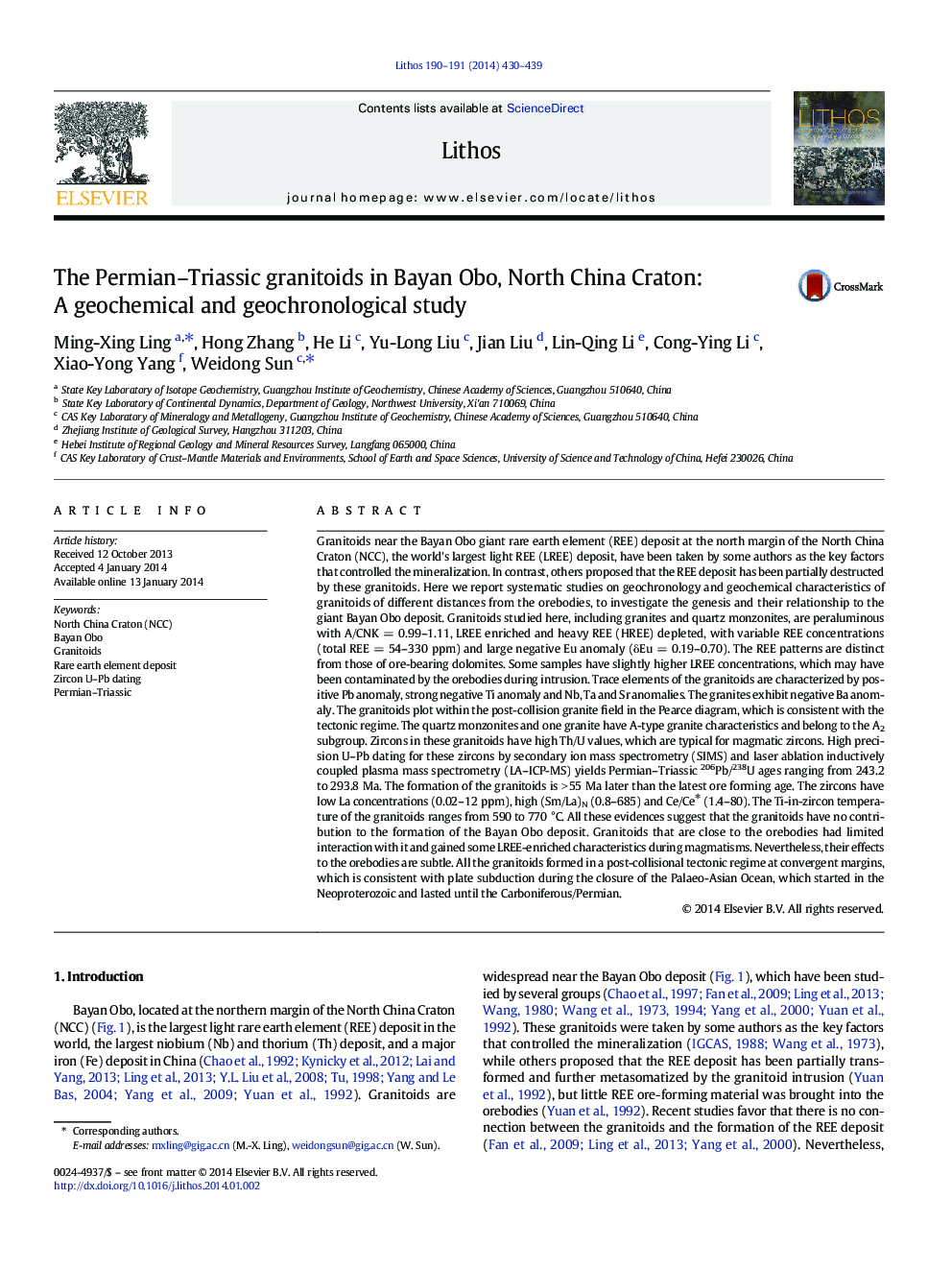| کد مقاله | کد نشریه | سال انتشار | مقاله انگلیسی | نسخه تمام متن |
|---|---|---|---|---|
| 4716027 | 1638680 | 2014 | 10 صفحه PDF | دانلود رایگان |
• Detailed geochemistry on a profile of granitoids near the Bayan Obo orebodies
• Zircon U–Pb ages are > 55 Ma younger than the latest ore forming stage (~ 350 Ma).
• The granitoids are post-collisional, with several A-type granites (A2 subgroup).
• The REE patterns of granitoids are distinct from those of ore-bearing dolomites.
• The granitoids have no contribution but limited destruction to the deposit.
Granitoids near the Bayan Obo giant rare earth element (REE) deposit at the north margin of the North China Craton (NCC), the world's largest light REE (LREE) deposit, have been taken by some authors as the key factors that controlled the mineralization. In contrast, others proposed that the REE deposit has been partially destructed by these granitoids. Here we report systematic studies on geochronology and geochemical characteristics of granitoids of different distances from the orebodies, to investigate the genesis and their relationship to the giant Bayan Obo deposit. Granitoids studied here, including granites and quartz monzonites, are peraluminous with A/CNK = 0.99–1.11, LREE enriched and heavy REE (HREE) depleted, with variable REE concentrations (total REE = 54–330 ppm) and large negative Eu anomaly (δEu = 0.19–0.70). The REE patterns are distinct from those of ore-bearing dolomites. Some samples have slightly higher LREE concentrations, which may have been contaminated by the orebodies during intrusion. Trace elements of the granitoids are characterized by positive Pb anomaly, strong negative Ti anomaly and Nb, Ta and Sr anomalies. The granites exhibit negative Ba anomaly. The granitoids plot within the post-collision granite field in the Pearce diagram, which is consistent with the tectonic regime. The quartz monzonites and one granite have A-type granite characteristics and belong to the A2 subgroup. Zircons in these granitoids have high Th/U values, which are typical for magmatic zircons. High precision U–Pb dating for these zircons by secondary ion mass spectrometry (SIMS) and laser ablation inductively coupled plasma mass spectrometry (LA–ICP-MS) yields Permian–Triassic 206Pb/238U ages ranging from 243.2 to 293.8 Ma. The formation of the granitoids is > 55 Ma later than the latest ore forming age. The zircons have low La concentrations (0.02–12 ppm), high (Sm/La)N (0.8–685) and Ce/Ce⁎ (1.4–80). The Ti-in-zircon temperature of the granitoids ranges from 590 to 770 °C. All these evidences suggest that the granitoids have no contribution to the formation of the Bayan Obo deposit. Granitoids that are close to the orebodies had limited interaction with it and gained some LREE-enriched characteristics during magmatisms. Nevertheless, their effects to the orebodies are subtle. All the granitoids formed in a post-collisional tectonic regime at convergent margins, which is consistent with plate subduction during the closure of the Palaeo-Asian Ocean, which started in the Neoproterozoic and lasted until the Carboniferous/Permian.
Journal: Lithos - Volumes 190–191, March 2014, Pages 430–439
